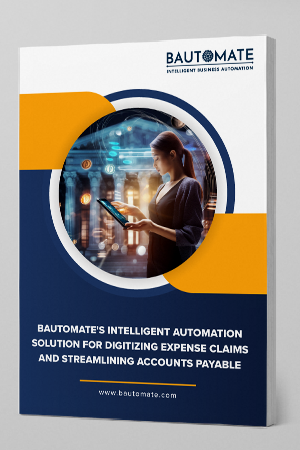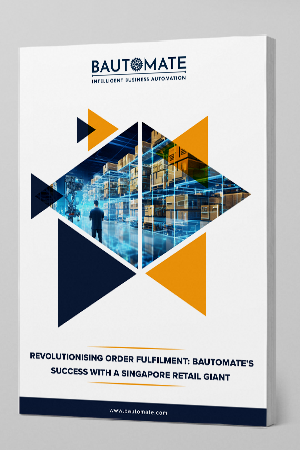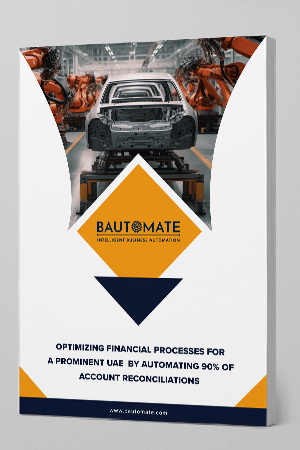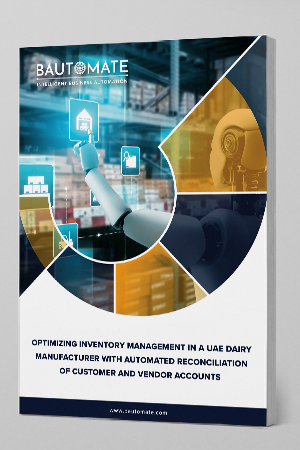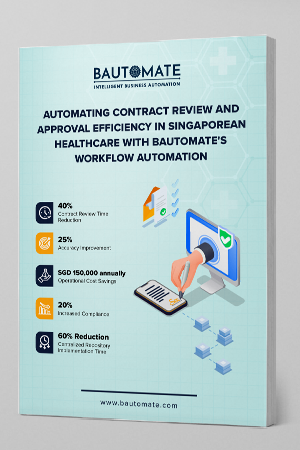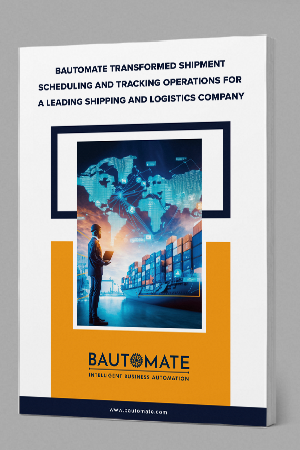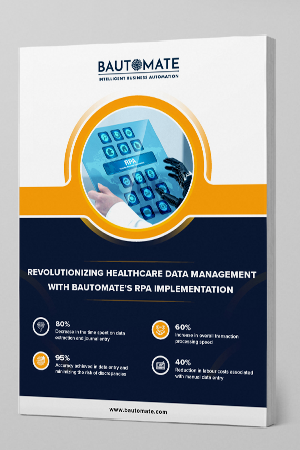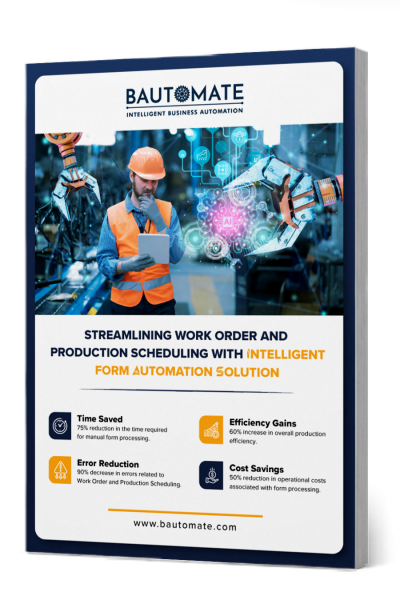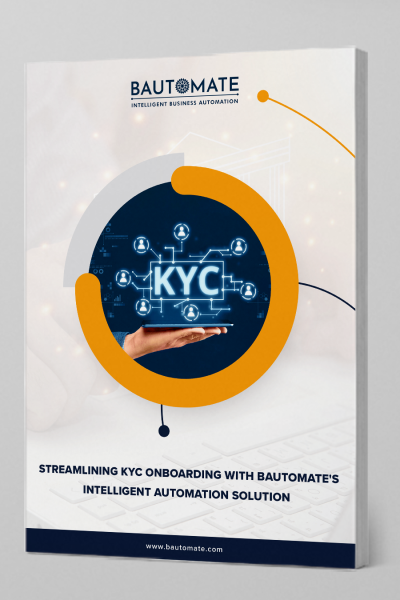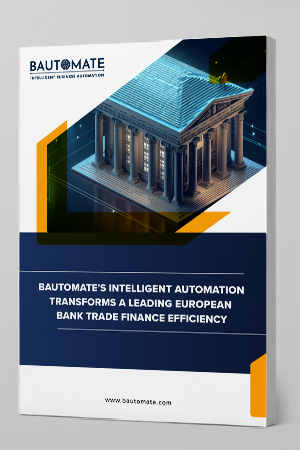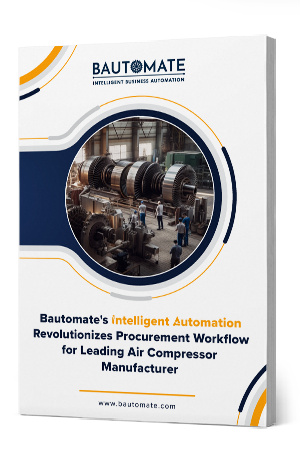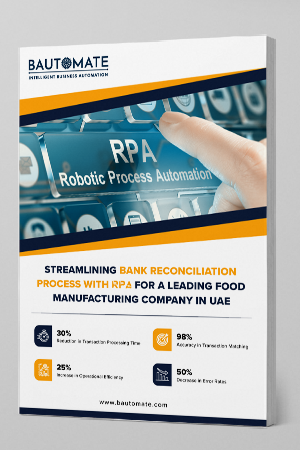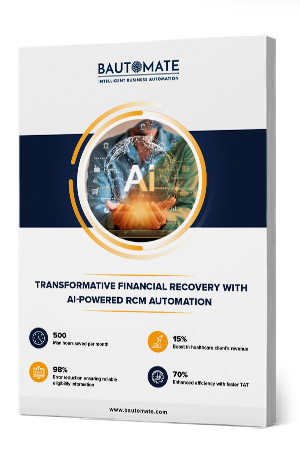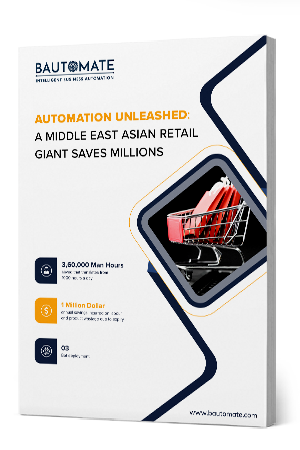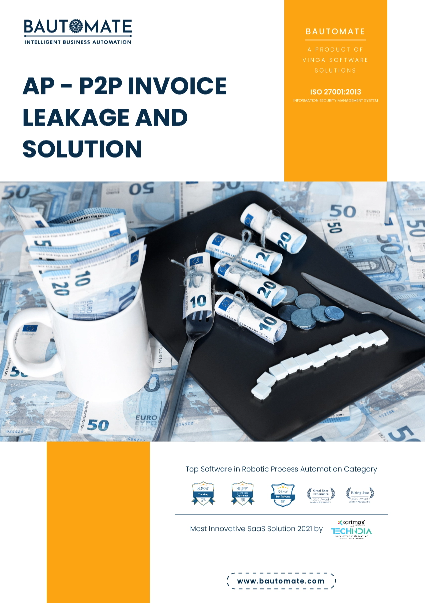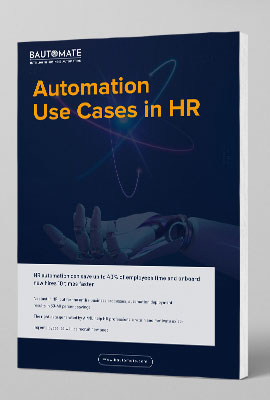
What is Financial Automation and How Does It Work?
Financial automation is a process of automating the financial processes and activities in an organization. It uses the AI, ML, RPA technology to streamline, optimize and automate various financial tasks such as invoicing, payments, CapEx and more.
Intelligent automation helps businesses save time by automating routine tasks and help reduce errors by eliminating human error from the equation.
How to Implement Financial Automation in Your Business?
Implementing financial automation in your business can be a significant step towards digital transformation, improving efficiency, reducing errors, and freeing up time for more strategic tasks. Here are some Finance Automation Use Cases you can take to implement in your business:
1. Accounts Payable
Accounts payable is a process where a company pays its vendors or suppliers for goods or services received. This process can be automated using RPA that extracts data from invoices and populates it into the accounting system. This eliminates the need for manual data entry and reduces the risk of errors. Intelligent Bot can also route invoices for approval and automatically schedule payments.
2. Accounts Receivable
Accounts receivable is a process where a company collects payments from its customers for goods or services delivered. This process can be automated with RPA that generates invoices, sends them to customers, and automatically reconciles payments. This eliminates the need for manual data entry and reduces the risk of errors. Intelligent RPA can also generate reminders for overdue payments and route disputes for resolution.
3. Invoice Processing
Processing invoices is a necessary but tedious process that can take up a lot of time for finance teams. However, with automated invoice processing, businesses can eliminate the need for manual data entry, reduce the risk of errors, and speed up the invoice approval process. Automated invoice processing uses optical character recognition (OCR) technology to read invoices and extract data, which is then automatically entered into the accounting system.
4. Optical Character Recognition (OCR)
OCR technology reduces the amount of manual data entry required for purchase invoices. OCR-based automation renders the AP process touch-less by automatically extracting invoice data and converting the data into editable text, which can populate fields in a database or AP system and create an electronic version of the invoice. Thus, cutting out the redundant, laborious, error-prone manual input in the AP system.
5. Reconciliation
Reconciliation is a process where a company matches transactions between two or more accounts to ensure that they are accurate and complete. This process can be automated with an Intelligent hyper automation platform that matches transactions, identifies discrepancies, and flags exceptions. This eliminates the need for manual data entry and reduces the risk of errors. The software can also provide real-time visibility into account balances and transactions.
6. Capital expenditure (Capex) automation
Streamline the process of managing and tracking capital expenditures, Like investments in fixed assets, infrastructure, and equipment. Improves the accuracy of financial reporting, budgeting, and forecasting.
7. Approval Workflow Automation
Streamline and automate the process of approving payments within an organization. creating a digital workflow that routes payment requests to the appropriate approver based on predefined rules and criteria. Improves efficiency, and helps to ensure compliance with company policies and regulations. Automating this process reduces the need for manual intervention.
Unlocking the Potential of Financial Automation for Your Businesses
Finance automation has become vital for businesses to drive productivity and streamline their financial operations. By automating repetitive tasks, finance teams can save time, reduce the risk of errors, and focus on more strategic initiatives. Additionally, automation can help reduce costs, improve financial visibility and control, and ensure compliance with financial policies and regulations. With the right financial automation solution, businesses can unlock the potential of their finances and achieve greater success.




